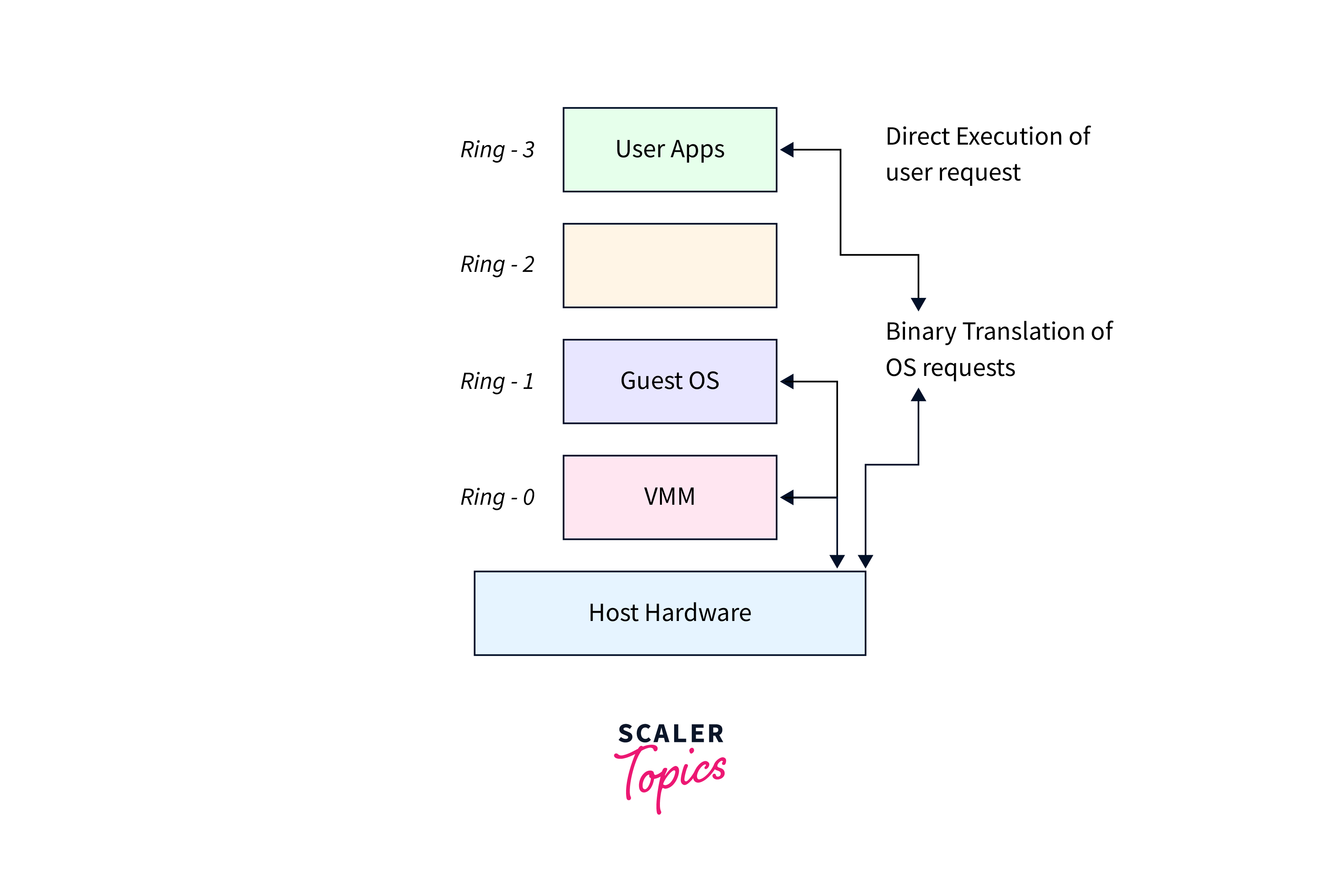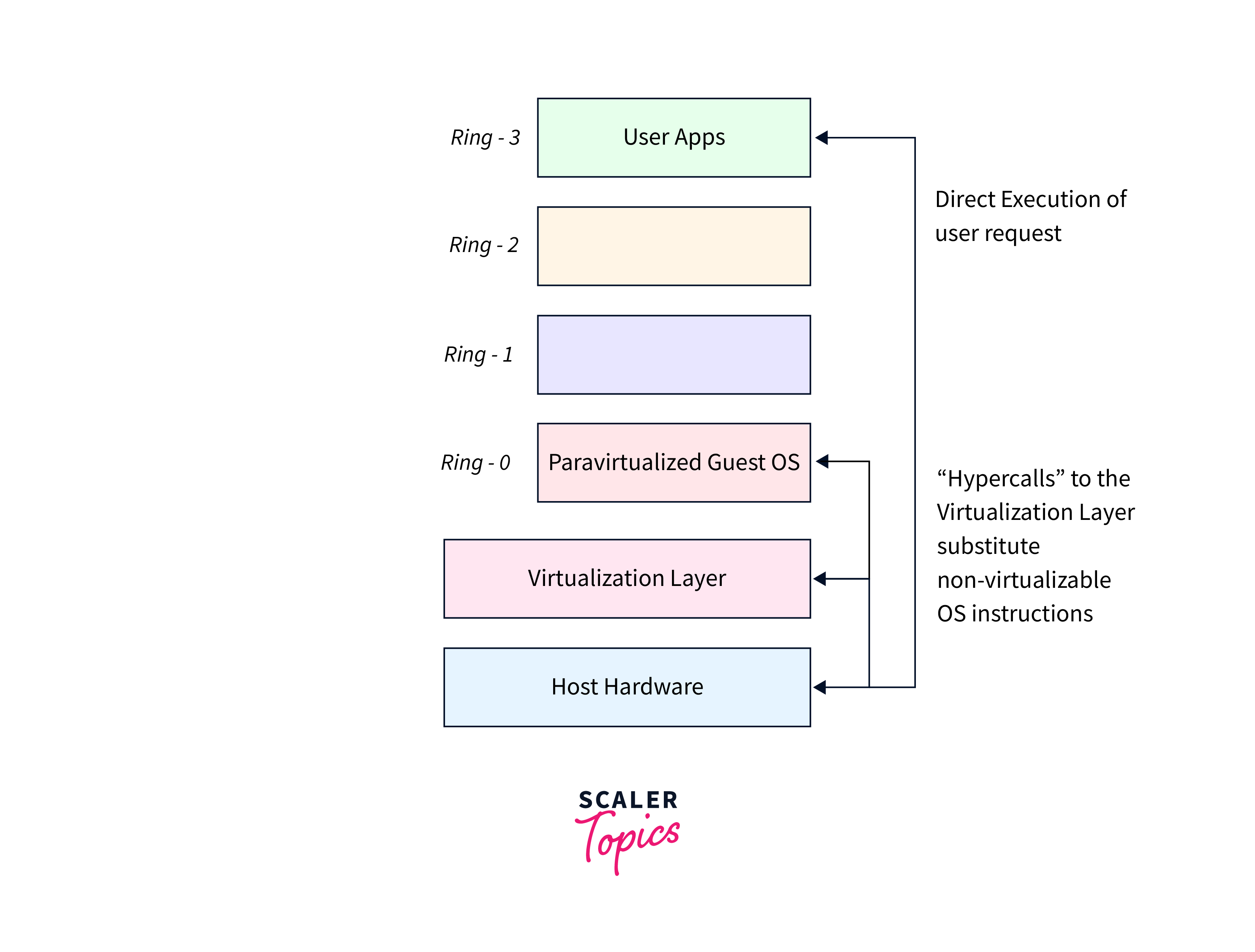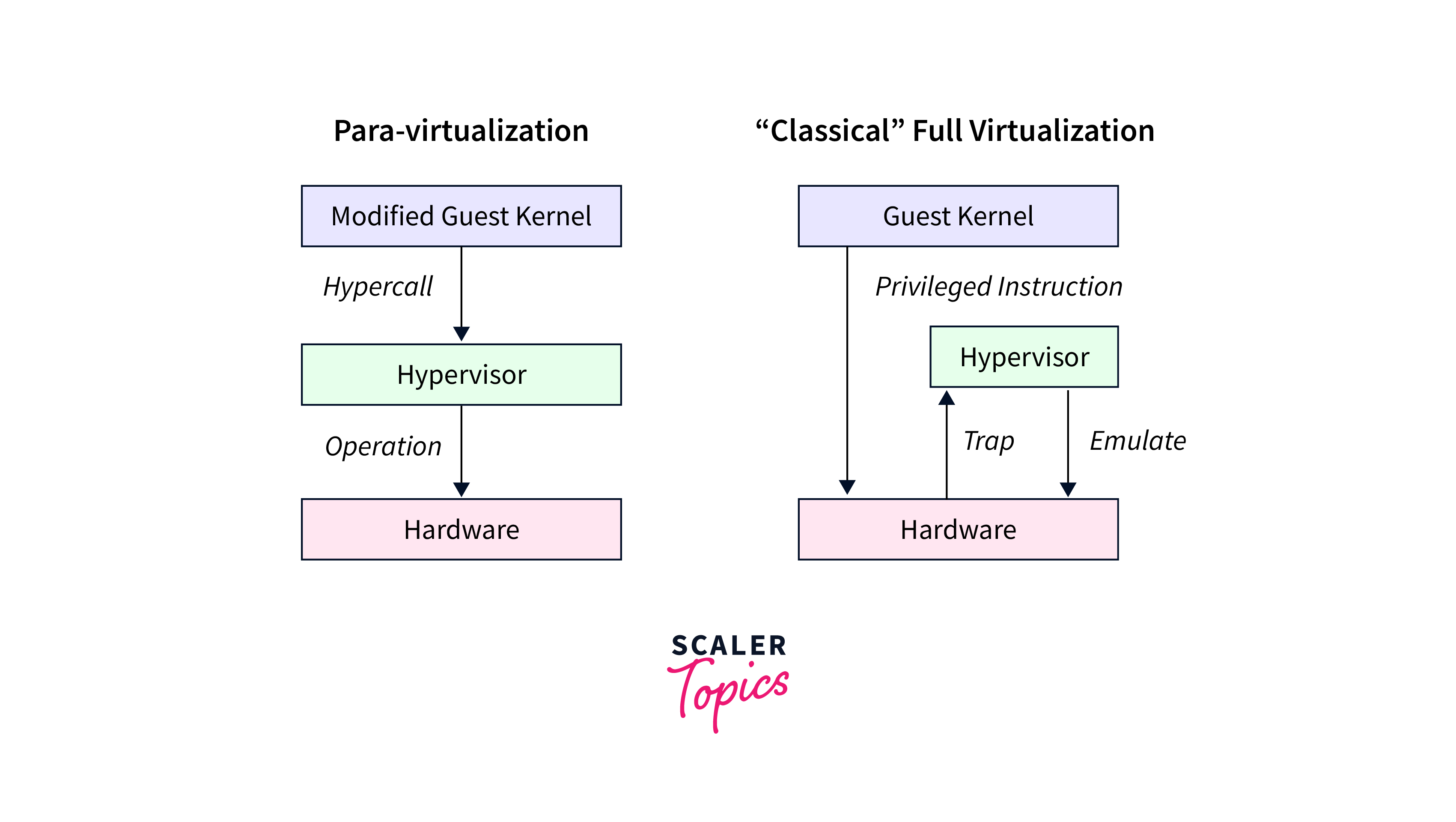Difference between Full Virtualization and Para Virtualization
Overview
Virtualization technology has revolutionized the way we use computer resources, allowing us to efficiently utilize hardware and run multiple operating systems on a single physical machine. Two prominent approaches to virtualization are Full Virtualization and Para Virtualization, each with its own set of advantages and limitations. In this comprehensive article, we will dive deep into the differences between full virtualization and paravirtualization, exploring their concepts, implementation, and use cases. By the end, you'll have a clear understanding of when to opt for one over the other.
Full Virtualization
Full Virtualization is a virtualization technique that simulates an entire physical computer, including its hardware components, to create multiple virtual machines (VMs) that run independently on a single physical host. In this approach, the guest operating system is unaware that it's running in a virtualized environment, as it interacts with virtualized hardware that emulates real hardware.
How Full Virtualization Works?
- Hypervisor Layer:
Full virtualization relies on a hypervisor, also known as a Virtual Machine Monitor (VMM), which sits between the physical hardware and guest operating systems. The hypervisor manages and controls the allocation of physical resources to virtual machines. - Hardware Virtualization:
Full virtualization uses hardware-assisted virtualization technologies like Intel VT-x or AMD-V to enhance performance. These technologies allow the hypervisor to run guest OSes directly on the physical CPU without significant performance overhead. - Isolation:
VMs created through full virtualization are completely isolated from each other. Each VM runs its own instance of the guest operating system, which cannot interfere with other VMs. - Examples:
Popular hypervisors for full virtualization include VMware vSphere/ESXi, Microsoft Hyper-V, and Oracle VirtualBox.

Full virtualization is well-suited for scenarios where you need to run different operating systems on the same physical server, such as hosting multiple Windows and Linux VMs on a single machine. It offers excellent isolation and security between VMs, making it suitable for scenarios like cloud computing and data center environments.
Para Virtualization
Para Virtualization, on the other hand, takes a slightly different approach to virtualization. It involves modifying the guest operating systems to be aware of the virtualized environment. Unlike full virtualization, where the guest OS runs unmodified, paravirtualization requires guest OSes to use a specific set of APIs to interact with the virtualization layer.
How Para Virtualization Works?
- Hypervisor Layer:
Similar to full virtualization, paravirtualization also employs a hypervisor, but here, the guest operating systems are aware of it. The hypervisor provides a set of APIs that guest OSes must use to communicate with the underlying hardware. - Guest OS Modifications:
Guest operating systems must be modified to replace certain hardware-related instructions with hypercalls, which are calls to the hypervisor. These hypercalls allow the guest OS to request services from the hypervisor, such as memory management or CPU scheduling. - Performance Benefits:
Since para virtualization avoids the overhead of emulating complete hardware, it often offers better performance than full virtualization. Guest OSes can communicate more directly with the hypervisor, resulting in improved efficiency. - Examples:
Xen is a widely-used hypervisor that supports para virtualization. It is known for its performance and scalability in virtualized environments.

Full Virtualization Vs Para Virtualization
Let's summarize the key differences between full virtualization and para virtualization in a tabular format:
| Aspect | Full Virtualization | Para Virtualization |
|---|---|---|
| Guest OS Modification | Not required; runs unmodified | Requires modifications to use hypercalls |
| Performance | Slightly lower due to emulation | Better performance due to direct interaction |
| Isolation | Strong isolation between VMs | Isolation with awareness of other VMs |
| Guest OS Flexibility | Supports various OS types | Works best with compatible OSes |
| Hardware Compatibility | Compatible with most hardware | Requires hardware support for para virtualization |
| Hypervisor Layer | Hypervisor manages virtual hardware independently | Hypervisor provides APIs for communication |
| Interaction with Hardware | Emulates complete hardware | Uses hypercalls to request hardware services |
| Examples | VMware, Hyper-V, VirtualBox | Xen, KVM, QEMU |
| Resource Overhead | Slightly higher resource overhead | Lower resource overhead for the hypervisor |
| Use Cases | Mixed OS environments, strong isolation needed | Performance-critical applications, homogeneous OS environment |

Understanding these differences will help you choose the right virtualization approach based on your specific needs and constraints.
FAQs
Q: What is the main difference between full virtualization and para virtualization?
A: The main difference lies in how the guest operating systems interact with the virtualization layer. Full virtualization runs unmodified guest OSes, while para virtualization requires modifications and uses hypercalls for communication.
Q: Which virtualization approach offers better performance?
A: Para virtualization typically offers better performance compared to full virtualization, as it allows guest OSes to communicate more directly with the hypervisor.
Q: When should I choose full virtualization over para virtualization?
A: Full virtualization is a better choice when you need to run a variety of guest OSes and strong isolation between VMs is crucial.
Q: What is an example of a hypervisor that supports para virtualization?
A: Xen is a popular hypervisor that supports para virtualization and is known for its performance and scalability.
Conclusion
- In the world of virtualization, choosing between full virtualization and para virtualization is a decision that depends on your specific requirements and constraints.
- Full virtualization offers compatibility with various guest operating systems and strong isolation between VMs, making it ideal for scenarios with mixed OS environments.
- On the other hand, para virtualization excels in performance by allowing guest OSes to communicate directly with the hypervisor. It is a great choice when you have control over the guest operating systems and can modify them to use hypercalls.
- Ultimately, the choice between full virtualization and para virtualization should be made after careful consideration of your organization's needs, hardware compatibility, and performance expectations.
- Both approaches have their strengths and weaknesses, and the right choice can significantly impact the efficiency and effectiveness of your virtualized environment.
